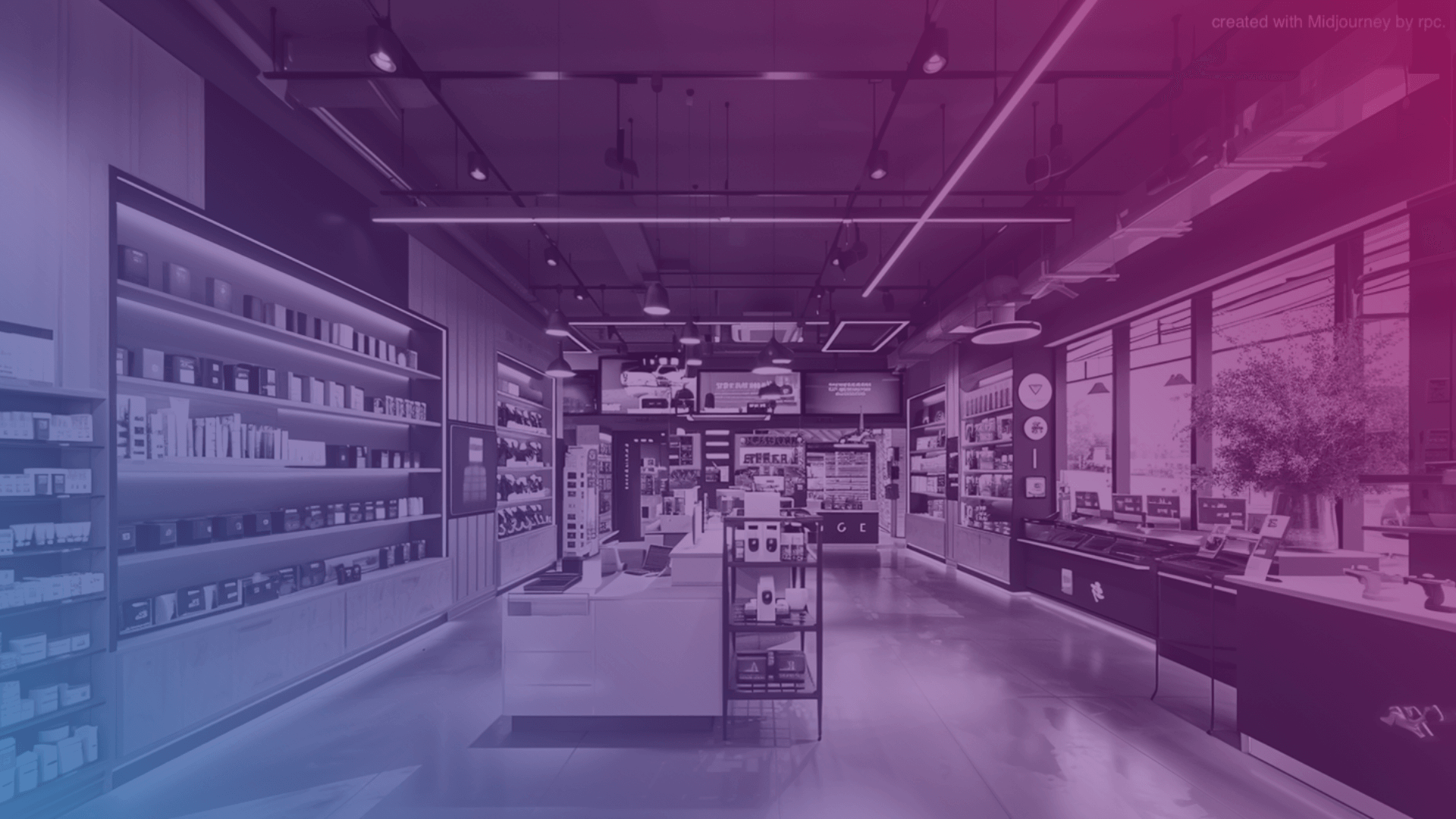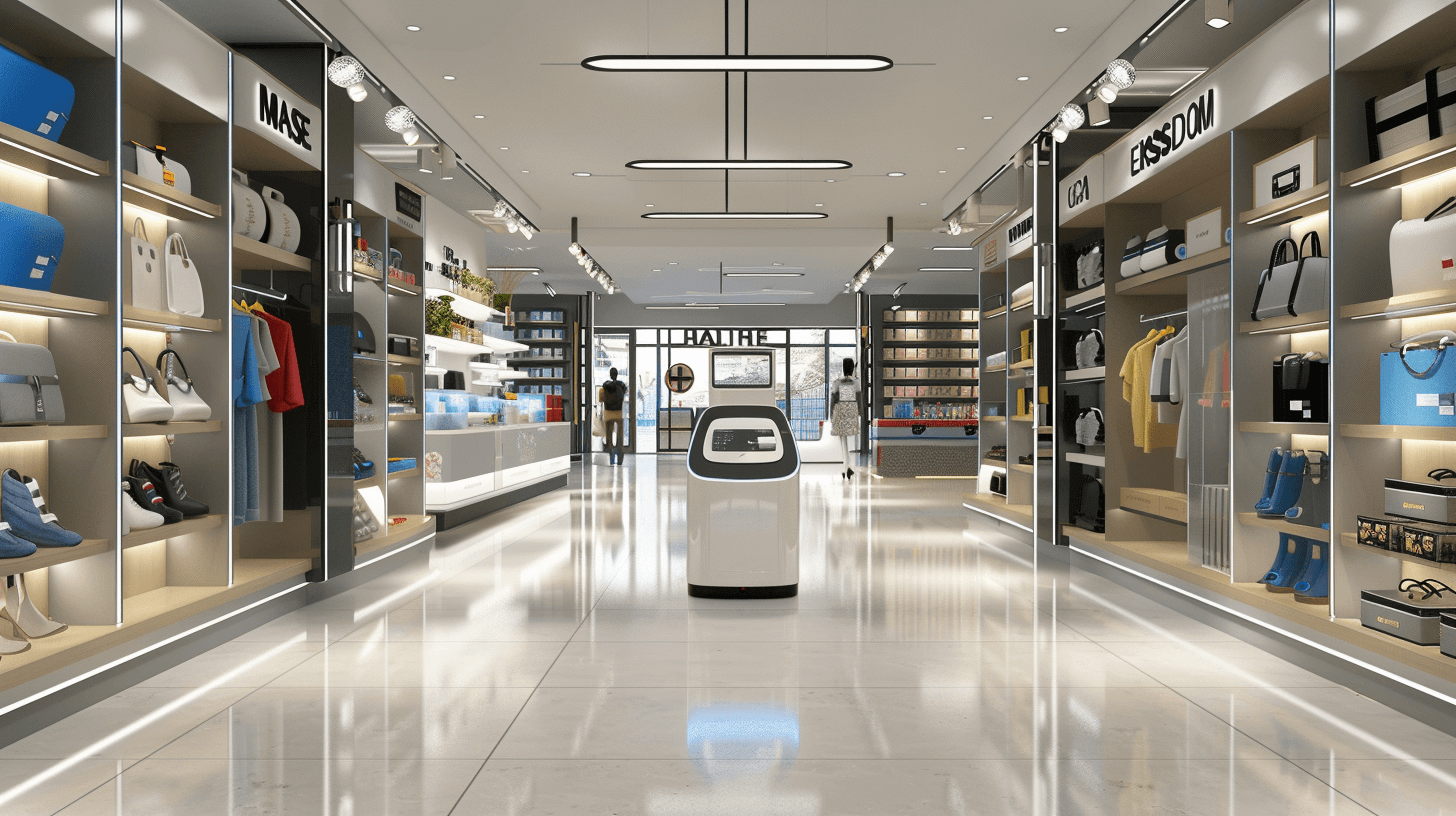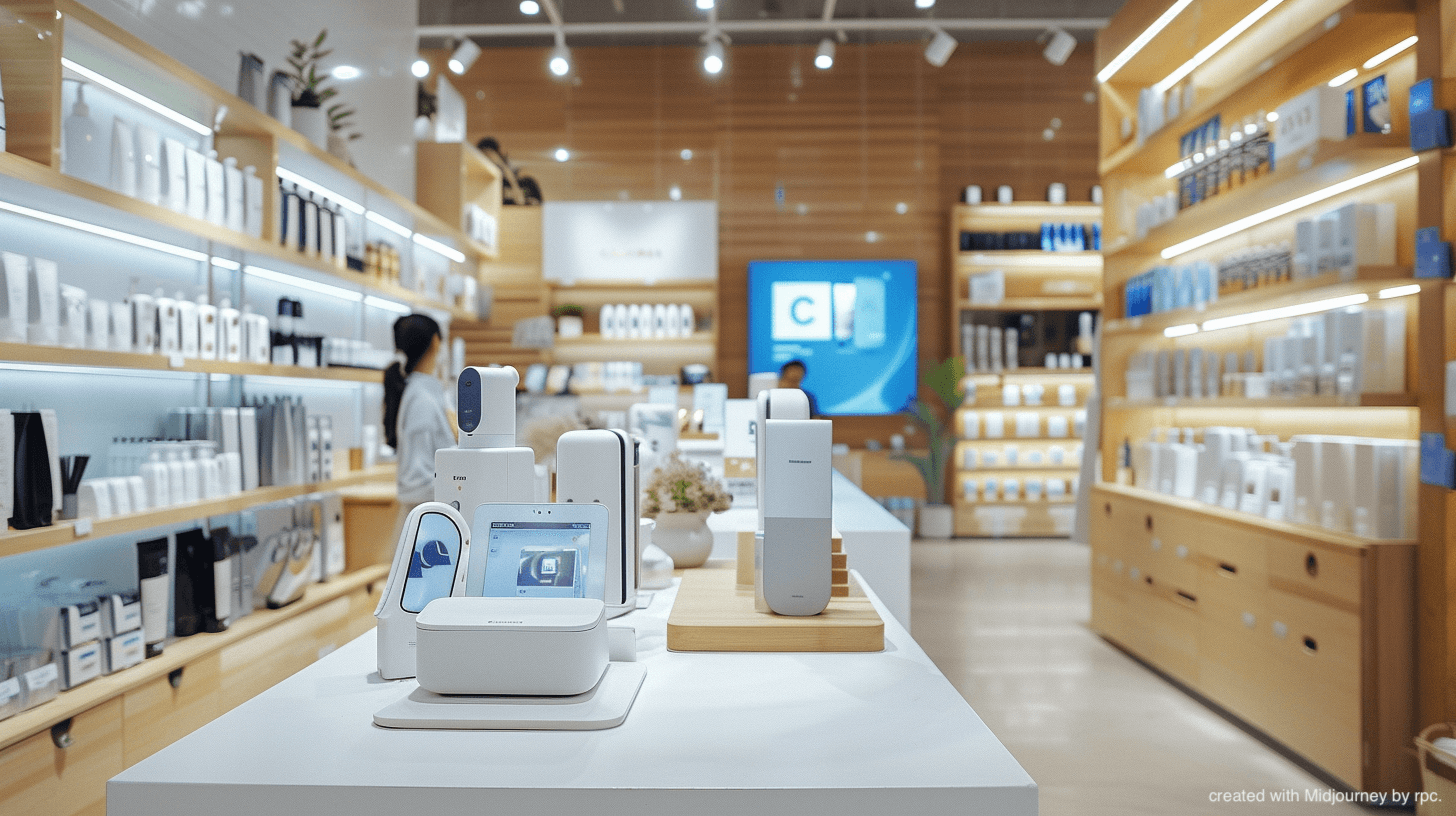
Digitization in Retail – Focus: In-store Digitization
4 types of digitization
Digitalization can be divided into four main categories. It is often equated with technology, as modern technologies are often the driving force behind transformation processes.
Data analysis
By analyzing relevant data, more accurate predictions for the future can be made, rather than relying on forecasts from the past.
Process automation
By integrating robots and process automation, human interaction points can be minimized.
System integration
By developing and implementing appropriate IT systems and platforms, digital innovations can be effectively promoted.
New devices and sensors
By integrating the right components and appropriate hardware, digital transformation can be advanced.
Enhancing the shopping experience through in-store technologies
Studies show that 46% of customers value a personalized shopping experience. By leveraging in-store digitalization, several benefits can be realized, including:
- enhanced customer interaction
- more efficient operations (e.g., reduced wait times, optimized inventory management, increased sales, etc.)
- personalized shopping experiences (e.g., improved customer service)
- seamless integration of online and offline channels
- data-driven decision making
- etc.
By utilizing the right technologies, personalization in-store can be significantly improved.
Which technologies are recommended?
In-store digitalization in retail offers a range of new technologies that can revolutionize the shopping experience.
+1000 new applications since April 2024

These technologies include digital price tags, self-checkout systems, interactive displays, smart fitting rooms, Augmented Reality (AR) applications, beacon technology, smart shelves, various mobile payment options, and of course, AI solutions.
Each of these innovations has the potential to enhance customer service, increase efficiency, and boost customer loyalty.
However, it is crucial to consider the individual circumstances of each retailer to determine which technologies should be implemented and to what extent. Factors such as store size, target audience, product range, and existing infrastructure play a central role in selecting and implementing the appropriate digital solutions. A thorough analysis and customized implementation strategies are essential to maximize the benefits of in-store digitalization and ensure long-term success.
How to get started?
The right approach is crucial for structuring retail operations.

CUSTOMER
Retail Journey
Structuring along the retail journey —from the first point of contact to long-term loyalty —is essential as it covers all touchpoints a customer has with the retailer. This holistic approach allows for the development of targeted measures for customer engagement and retention that enhance the shopping experience. By strategically focusing on the entire customer journey, retailers can offer personalized offers and excellent service to sustainably strengthen customer loyalty.

OPERATIONS
Retail Analytics
Considering Retail Analytics enables a detailed analysis of the entire customer journey, from the headquarters (HQ) to the point of sale (POS). This data analysis helps retailers make informed decisions and develop targeted measures to optimize the shopping experience. By integrating retail analytics, retailers can implement personalized offers and efficient processes that strengthen customer retention and sustainably increase loyalty.

NETWORK
Retail Space
The analysis of retail space in addition to attendance data in the store enables a precise evaluation of customer flows and time spent in the store. These insights help retailers design store layouts more efficiently and optimize product placements to enhance the shopping experience. Additionally, leveraging presence data allows for the development of personalized marketing strategies that strengthen customer loyalty and increase sales.
"Without data you’re just another person with an opinion.“
Statstician W. Edwards Deming
How do I collect data?
Identifying Customers in-store – The 4 key questions of customer identification in brick-and-mortar retail
Collecting data is crucial as it forms the basis for informed decisions and strategic planning. Proper data collection is essential to ensure its accuracy and relevance, which in turn leads to reliable and meaningful results.
WHY
do I want to collect customer data?
WHAT
customer data do I want to collect?
WHERE
do I want to collect customer data?
HOW
do I want to collect customer data?
The reason for collecting customer data determines what data I need to collect.
The way how I collect customer data throughout the in-store customer journey determines the timing and location of data collection.








